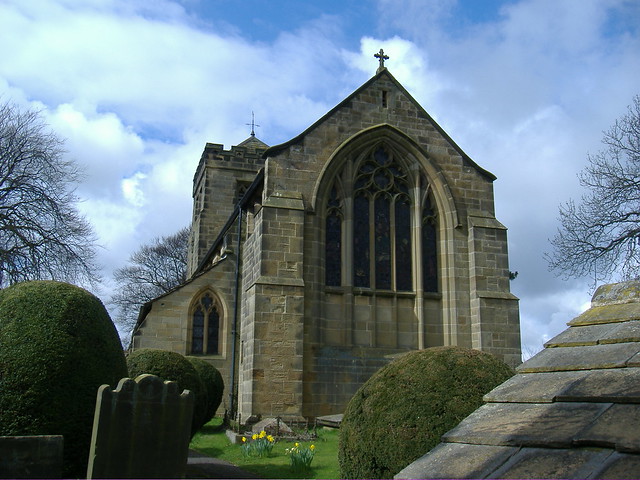St Botolph's has been described by Geoff Brandwood, today's leading authority on Temple Moore, as one of the architect's loveliest buildings.
Typical Moore features include the graceful handling of the scale of the nave and chancel, the asymmetrical placing of the windows, and the way the tower, aisles and south doorway all interrelate.
St Botolph's was built at the instigation of the vicar, the Reverend John Latimer Kyle, with whom Moore became good friends. Lord Feversham donated the stone for the church, in return for which Kyle conducted services at another of Moore's churches, St John the Evangelist's in Bilsdale.
The Reverend Kyle was one of those dizzyingly energetic public men who seem to turn up everywhere in late-Victorian England. Besides combining his ministry with farming and owning the pub next to the vicarage, he was a well-known sportsman and Master of Hounds for the local hunt. He eventually became a canon at York Minster.
The church features Moore's signature elongated piers. Like all of his work, it is evidence of a mind concerned not just with how the building looks but with how it feels. The calm and welcoming atmosphere at St Botolph's is a product of Moore's skilful manipulation of space and proportion. He also enjoyed introducing elements like the piercings at the back of the sedilia (the canopied stone seat near the altar) and the piscina (the shallow basin used for washing the communion vessels) without the effect being at all jarring.
The clerk-of-the-works during the building of St Botolph's is said to have been Giles Gilbert Scott, later famous for designing the red telephone box. He was apprenticed to Moore in 1899.
There's a dramatic story about the prehistory of St Botolph's. The previous vicar, George Sanger, had devoted years to raising funds in order to build a church here, even doing the stone and wood carving himself. Then, in 1882, the night before the dedication, the building was burnt to the ground. The poor vicar was arrested on suspicion of arson. The fire was in all likelihood the result of a revenge attack — Sanger had just dismissed the local schoolmaster for being “manifestly unfit”. Nevertheless, the incident ended Sanger's career. You can read the full story in John Fairfax Blakeborough's “Life in a Yorkshire Village.”
Another notable resident of the village was ironmaster and engineer John Gjer, two of whose patented kilns formed part of the auction sale of the Grosmont ironworks in 1891. The list of items in the sale is mindboggling: 67 cottages, 3 villa residences, a workmen's institute, offices, and a butcher's shop were included, not to mention the freehold of 104 acres with mineral rights. The starting price was £10,000.
